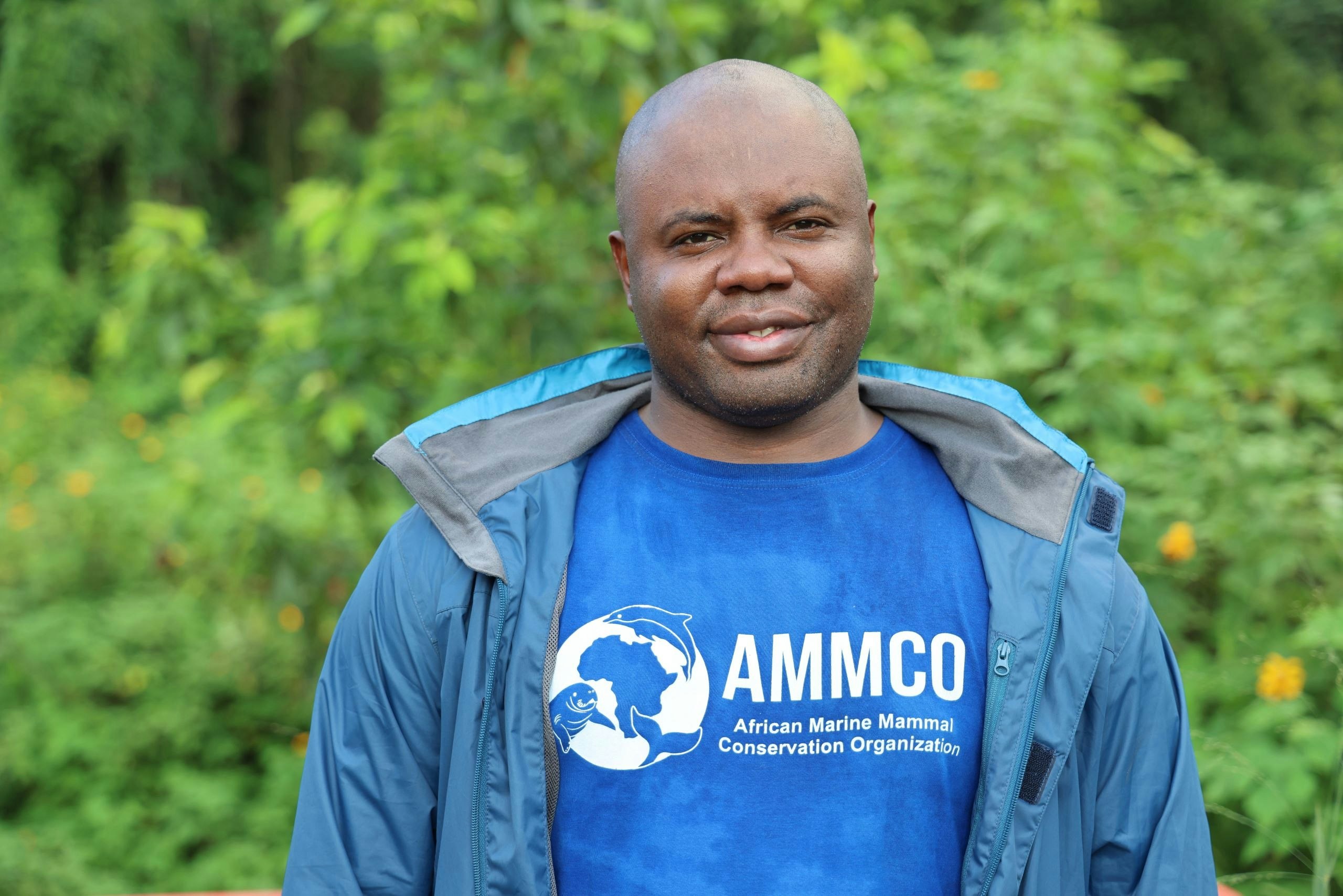Cameroon’s Lake Ossa Widlife Reserve is recognised as a hotspot for the African manatee, which is listed as Vulnerable by the International Union for Conservation of Nature (IUCN). Around 17,000 people live around Lake Ossa with the majority depending on its resources to survive, including over 300 fishers. In 2016, an invasive plant species known as giant salvinia began to spread rapidly in the lake, covering more than half of its surface in five years. The outbreak is linked to increased nutrient enrichment in the water caused by human activities, while escalating deforestation in the area surrounding the lake has exacerbated its degradation, impacting on the African manatee and local fishing activities.
WORKING TOGETHER
The African Manatee in Lake Ossa is better known than any other African manatee population across their distribution, thanks largely to the work of Aristide. Between 2008 and 2010, he conducted the first observation and traditional ecological knowledge study of manatees in Lake Ossa and the adjacent Sanaga River, relying heavily on the knowledge of local fishermen. The manatees had been a cause of conflict with the fishermen, sometimes becoming entangled in their nets and depleting their catch – but were also targeted by poachers who prized them for their meat, skin and other body parts. Aristide’s NGO, African Marine Mammal Conservation Organization (AMMCO) has since trained a network of fishermen who voluntarily report sightings of marine mammals through their mobile application, SIREN. Since 2015, AMMCO’s SIREN network has documented over 20,000 sightings of marine wildlife along the coast.
NATURAL SOLUTIONS
The shoreline of Lake Ossa is now dominated by the invasive giant salvinia (Salvinia molesta). This new menace emerged in 2021, covering over 50% of the lake’s surface. Nutrient pollution, likely originating from the Sanaga River, fuelled its proliferation. This environmental disruption led to the displacement of manatees from the lake, a decline in fishing activity, and increased deforestation as fishermen turned to crop farming. To combat giant salvinia, Aristide and his team initiated a biological control approach using a natural and specific predator of the plant (the salvinia weevil), which has successfully reduced the Salvinia coverage in the lake by 70%. However, due to limited resources, they are still facing challenges in dispersing the weevils in the lake’s more inaccessible areas.
UPSTREAM IMPACTS
Aristide wants to showcase how poor management of the watershed upstream affects aquatic ecosystems and livelihoods downstream. His team has launched a study within the Sanaga River watershed to understand the primary sources of nutrient enrichment and use the data to advocate for integrated water resources management. At the same time, their goal is to improve the livelihoods of the local people by supporting community-managed fish farming and developing opportunities for ecotourism. Cultural festivals such as the Street Manatee will also gather various stakeholders including government representatives, traditional leaders, fishers, universities, researchers, donors and the private sector to address freshwater ecosystem management. Photo credit: African Aquatic Conservation Fund
Photo credit: African Aquatic Conservation Fund
Using his Whitley Award, Aristide and his team will:
- Reduce salvinia coverage in Lake Ossa, allowing manatees to surface to breathe, and their food plants to grow
- Identify the main sources of nutrient enrichment in Lake Ossa through three additional water quality monitoring campaigns across the Sanaga river watershed
- Deploy an acoustic sensor system to detect and deter artisanal logging activities within riparian forest to reduce nutrient run-off into the lake
- Support fishers to develop fish farming and ecotourism initiatives to reduce their impact on this freshwater ecosystem and decrease accidental capture of manatees by fisheries
top facts:
- The African manatee inhabits the coastal waters of 21 countries along Africa’s Atlantic coast
- The movement, habitat and populations of the African manatee are threatened by the building of agricultural and hydroelectric dams along rivers.
- Manatees have what are known as ‘marching molars’ – as they wear their teeth out by chewing on plants, they gradually lose them and the back teeth move forward throughout their life.



